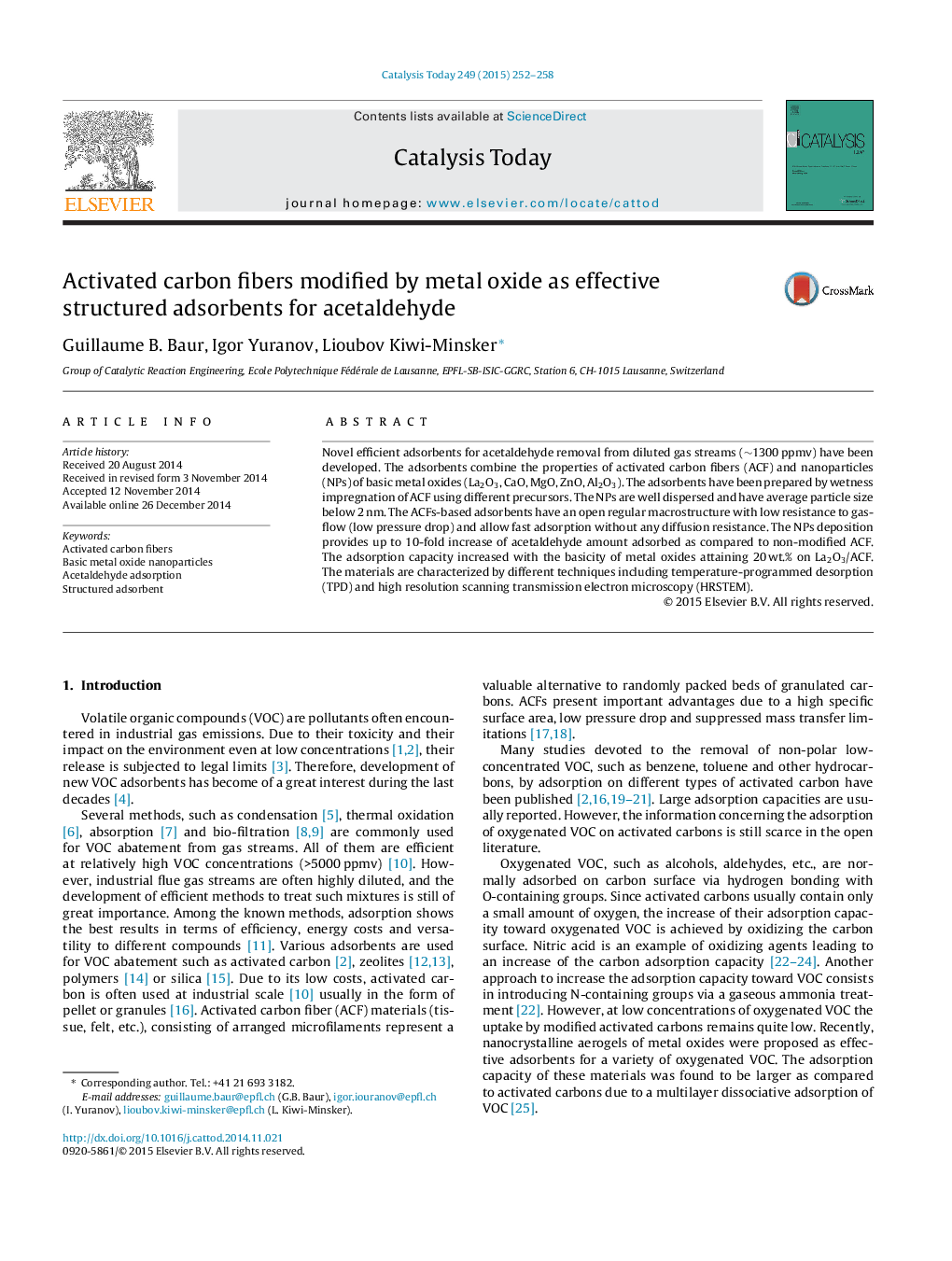| Article ID | Journal | Published Year | Pages | File Type |
|---|---|---|---|---|
| 53734 | Catalysis Today | 2015 | 7 Pages |
•Activated carbon fibers (ACFs) as structure adsorbents for acetaldehyde removal.•Metal oxide nanoparticles (<2 nm) deposition on ACF via wetness impregnation.•5-Fold increase of ACF adsorption capacity upon MgO nanoparticles deposition.
Novel efficient adsorbents for acetaldehyde removal from diluted gas streams (∼1300 ppmv) have been developed. The adsorbents combine the properties of activated carbon fibers (ACF) and nanoparticles (NPs) of basic metal oxides (La2O3, CaO, MgO, ZnO, Al2O3). The adsorbents have been prepared by wetness impregnation of ACF using different precursors. The NPs are well dispersed and have average particle size below 2 nm. The ACFs-based adsorbents have an open regular macrostructure with low resistance to gas-flow (low pressure drop) and allow fast adsorption without any diffusion resistance. The NPs deposition provides up to 10-fold increase of acetaldehyde amount adsorbed as compared to non-modified ACF. The adsorption capacity increased with the basicity of metal oxides attaining 20 wt.% on La2O3/ACF. The materials are characterized by different techniques including temperature-programmed desorption (TPD) and high resolution scanning transmission electron microscopy (HRSTEM).
Graphical abstractFigure optionsDownload full-size imageDownload high-quality image (238 K)Download as PowerPoint slide
